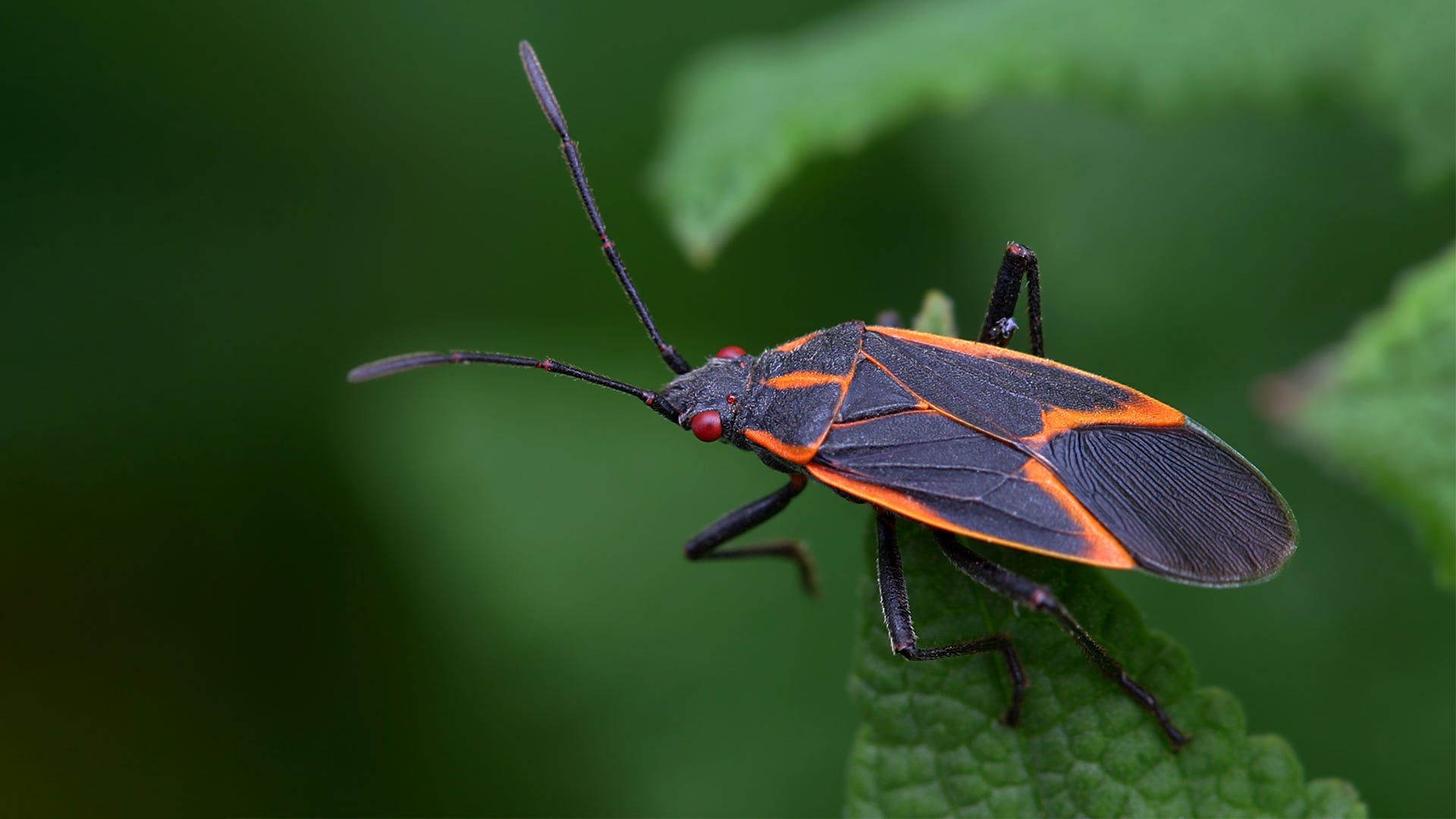
Boxelder Bug
Boxelder bugs are easily identified by their distinctive black and red/orange markings and the flattened shape of their bodies. They are typically found on boxelder trees but are also common on maple and ash trees. Boxelders are particularly pesky since they tend to congregate in large numbers and they leave a staining orange residue from their fecal matter or when they are smashed.
Signs of an Investation
Boxelder bugs generally become a problem when they invade homes, sheds, and garages in the fall and when they emerge in the spring. Like many overwintering pests, homeowners may see evidence of these bugs as the winter ends and they leave their overwintering site to go back outdoors.
-
Boxelder bugs are not known to bite, but their piercing-sucking mouthparts can occasionally puncture the skin, causing a slight irritation and producing a red spot similar to a mosquito bite.
-
Boxelder bugs do not sting or bite but they can do some pretty annoying damage to your home. When large numbers of these insects are sitting on the exterior of your home during box elder bug season or if they get inside and are perched on your drapes, the excrement they leave can stain the outside of your home or textiles with a bright orange stain. In their adult stage, box elder bugs love warmth so the inside of your home or the sunny side of your house is the perfect spot. They will group together in bunches to stay warm and in these box elder bug piles, the amount of orange fecal spots can add up and leave an ugly blight on your walls, fabrics, or exterior.
-
Boxelder bugs in their nymph stage are eating constantly. They suck the sap from box elder, maple, and ash trees along with other plants but they aren’t known to significantly damage trees in small numbers if you have a box elder bug infestation and they are sucking the life out of your landscaping, it is possible to cause injury to these trees and plants. In greater numbers, they can deform or discolor leaves and fruit.

